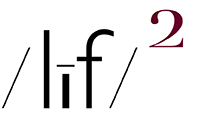RE: THE DEATH OF THE SMALL SENSOR CAMERA. I am not one to profess that I know what the future will bring. However, I will not let that stop me from offering a few thoughts on the speculative idea that small sensor cameras are on the way out.
First, let’s define “small”….best I can tell, it the current camera market, it seems that “small” is any sensor smaller than a full-frame-24mmx36mm-sensor. And, for some reason, camera makers seem to have decided that, surprise, surprise, bigger is better. If I put on my cynical hat, I would write that they think that the more money they can charge for a camera+lenses the better.
That written, the idea that small-sensor cameras are in a death spiral is based on the notion that, a huge majority of avid amateur picture makers will all want a full-frame sensor camera. A notion that I believe to be nonsense. cuz…
a) most full-frame cameras+lens are very expensive but, even if the prices drop over time…
b) …most picture makers, even avid amateurs, do not want to lug around large, heavy gear.
c) most avid amateurs who use “small”-format sensor cameras have an investment in lenses for their systems. Moving to full-frame sensor cameras means the significant added expense of acquiring new lens.
d) in addition to the expense of full-frame sensor cameras+lenses, there is, for many, the added expense of upgrading the computer in order to handle and store the larger file sizes, and, perhaps most significantly……
e) not all picture makers, including most avid amateurs, have the desire or the need to engage in the “my dick is bigger than your dick” competition.
All of that written, let me add my ultimate reason for why I do not give a damn about any sensor size. Simply out, I do not care one iota how or what gear was used to make a picture. I only care about the picture itself. And, great pictures can be made with just about any camera / picture making device you would care to mention.
FYI, the diptych in this entry offers a peek at the man behind the curtain. That is, the work I often put into the processing of my pictures. In the case of this picture, I probably-I did not keep track-employed more than 20 separate processing steps-most local as opposed to global-to achieve the final result.
